In 1989, National Aeronautics and Space Administration (NASA) in collaboration with Associated Landscape Contractors of America (ALCA) carried out Clean Air Study and published results which provide a definitive list of plants that are most effective at purifying indoor air.
The study, led by Dr. B. C. Wolverton, found that plants are effective at filtering likes of benzene, ammonia and formaldehyde etc from the air, helping to neutralize effects of Sick building syndrome. They found certain tropical plants, which are commonly used as houseplants, are quite effective in removing formaldehyde, trichloroethane, benzene and other pollutants from air and replacing them with breathable oxygen.
Report suggests to have at least one plant at every hundred square feet at home or at office space.
Below is the list of 29 best air purifying plants from NASA clean air study, test results of the study led by NASA researcher Dr. B. C. Wolverton have proven to be most authentic and widely accepted all over the world. Study was conducted in lab environment by following scientific research guidelines to present accurate results. We have another article on the study details which can be referenced from here.
Knowing Common Indoor Pollutants
Trichloroethylene – Found in printing inks, paints, lacquers, varnishes, adhesives, and paint removers. Symptoms associated with short-term exposure include: excitement, dizziness, headache, nausea, and vomiting followed by drowsiness and coma.
Formaldehyde – Found in paper bags, waxed papers, facial tissues, paper towels, plywood paneling, and synthetic fabrics. Symptoms associated with short-term exposure include: irritation to nose, mouth and throat, and in severe cases, swelling of the larynx and lungs.
Benzene – Used to make plastics, resins, lubricants, detergents, and drugs and found in tobacco smoke, glue, and furniture wax. Symptoms associated with short-term exposure include: irritation to eyes, drowsiness, dizziness, headache, increased heart rate, confusion and in some cases can result in unconsciousness.
Xylene – Found in rubber, leather, tobacco smoke, and vehicle exhaust. Symptoms associated with short-term exposure include: irritation to mouth and throat, dizziness, headache, confusion, heart problems, liver and kidney damage and coma.
Ammonia – Found in window cleaners, floor waxes, smelling salts, and fertilizers. Symptoms associated with short-term exposure include: eye irritation, coughing, sore throat.
Nitrogen Dioxide (NO2) – This harmful gas is formed by emissions from vehicles and factories during the burning of fuel. It is high in concentration in regions that are congested with vehicles and traffic. The gas is a respirator irritant, causing specific damage to the cardiovascular and respiratory system. It is known to cause airway inflammation among healthy individuals.
Sulphur Dioxide (SO2) – A highly reactive gas that carries a smell which is pungent and irritating, suplhur dioxide is formed by the burning of fuels in industries and factories. Its presence in the air results in the irritation of the lining of lungs, throat and nose, worsing the sysmptoms of patients with existing respiratory diseases such as asthma, and other cardiovascular problems.
Suspended Particulate Matter – Suspended Particulate Matter, or SPM, refers to the suspended solid and liquid particles in the air that are too small in size to be seen with the naked eye. Its short effects include irritation of the eyes and the respiratory tract, with the long term exposure causing asthma and weaker cardiovascular function.
29 Best Air Purifying Plants from NASA Clean Air Study
Lets have a look to the list of plants based on the priority of their pollutants removal.
1. PEACE LILY
Peace lily is one of the popular indoor plants categorized under araceae plants family. It was found to be one of the most effective plants which removes benzene, formaldehyde, trichloroethylene, ammonia, xylene, toluene and several other known pollutants. Below are its grow habits and overview as a houseplant:
Location – Indoors
Light – Shade, artificial light
Watering – Less frequent
Temperature – 16 to 32 degree celsius
Common names – Spath, closet plants
Botanical name – Spathiphyllum, – Get peace lily now
2. Chrysanthemum
Chrysanthemum is one of the most popular flowering plants categorized under genus chrysanthemum in the family asteraceae. It was found to be one of the most effective plants which removes benzene, formaldehyde, trichloroethylene, ammonia, xylene, toluene and several other known pollutant from the air. Below are its grow habits and overview as a houseplant:
Location – Outdoors
Light – Full sun
Watering – Less frequent
Temperature – 5 to 45 degree celsius
Common names – Daisy, mums, chrysanths, guldawdi, shevanti
Botanical name – Chrysanthemum indicum, Get chrysanthemum now
3. English Ivy
English Ivy is one of the most popular vine plants in europe, it is a species of flowering plant in the family araliaceae, native to most of europe and western asia. English Ivy was found to be one of the most effective plants which removes benzene, formaldehyde, trichloroethylene, xylene and toluene from the air. Below are its grow habits and overview as a houseplant:
Location – Indoors
Light – Shade, artificial light
Watering – Less frequent
Temperature – 5 to 30 degree celsius
Common names – Common ivy, english ivy, european ivy, ivy
Botanical name – Hedera helix, Get english ivy now
4. Snake Plant
Sansevieria is one of the hardiest and a perfect indoor plant which does not require bright or sun light as well as frequent watering. It was found to be one of the most effective air purifier plants which removes benzene, formaldehyde, trichloroethylene, xylene and toluene from the air. Below are its grow habits and overview as a houseplant:
Location – Indoors
Light – Shade, artificial light
Watering – Less frequent
Temperature – 5 to 45 degree celsius
Common names – Mother in laws tongue, snake plant
Botanical name – Sansevieria laurentii, Get snake plant now
5. Red-edged Dracaena
Red-edged Dracaena is a species from dracaena genus , native to south asia, counted under asparagaceae plants family, it is popular easy care houseplant which does well in diverse weather conditions. Dracaena marginata is efficient in removing benzene, formaldehyde, trichloroethylene, xylene and toluene. Below are its grow habits and overview as a houseplant:
Location – Indoors
Light – Shade, artificial light
Watering – Less frequent
Temperature – 5 to 45 degree celsius
Common names – Dragon tree
Botanical name – Dracaena marginata, Get draceana now
6. Bamboo Palm
Bamboo palm is one of the 107 species from genus chamaedorea categorized under plants family arecaceae, plant likes to grow under shade and humid conditions under tree in rain forests. It is effective in cleaning benzene, formaldehyde, trichloroethylene, xylene and toluene from the air. Below are its grow habits and overview as a houseplant:
Location – Indoors
Light – Shade, artificial light
Watering – Frequent
Temperature – 10 to 35 degree celsius
Common names – Bamboo palm
Botanical name – Chamaedorea seifrizii, Get bamboo palm now
7. Money Plant
Money plant is one of the most common house plants, it is a species of the plant family araceae , native to French Polynesia. Money plant is one of the hardiest plants which do well in most of the indoor environmental conditions. It is effective in cleaning benzene, formaldehyde, trichloroethylene, xylene and toluene from the air. Below are its grow habits and overview as a houseplant:
Location – Indoors
Light – Shade, artificial light
Watering – Less frequent
Temperature – 15 to 45 degree celsius
Common names – Golden pothos, hunter’s robe, ivy arum, money plant, silver vine, islands ivy, devils ivy
Botanical name – Epipremnum aureum, Get money plant now
8. Flamingo Lily
Anthurium is popular gift plant, it is an species in the plants family araceae, native to Colombia and Ecuador. Anthuriums have heart shape shiny green leaves and beautiful flowers which last for several months after bloom. It is effective in cleaning formaldehyde, amonia, xylene and toluene from the air. Below are its grow habits and overview as a houseplant:
Location – Indoors
Light – Shade, artificial light
Watering – Less frequent
Temperature – 12 to 30 degree celsius
Common names – Flamingo lily
Botanical name – Anthurium andraeanum, Get anthurium plant now
9. Janet Craig
Dracaena deremensis is one of the popular houseplants, it is a species from dracaena genus counted under asparagaceae plants family. Janet craig is hardy to adverse weather conditions and suits to grow indoors. It is effective in cleaning benzene, formaldehyde and trichloroethylene from the air. Below are its grow habits and overview as a houseplant:
Location – Indoors
Light – Shade, artificial light
Watering – Less frequent
Temperature – 5 to 45 degree celsius
Common names – Janet Craig
Botanical name – Dracaena deremensis “Janet Craig”, Dracaena fragrans, Get janet craig now
10. Warneckei
Warneckei is another popular houseplants, it is a species from dracaena genus counted under asparagaceae plants family. The plant is hardy to adverse weather conditions and suits to grow indoors. It is effective in cleaning benzene, formaldehyde and trichloroethylene from the air. Below are its grow habits and overview as a houseplant:
Location – Indoors
Light – Shade, artificial light
Watering – Less frequent
Temperature – 5 to 45 degree celsius
Common names – Warneckei
Botanical name – Dracaena deremensis “Warneckei”, Get warneckei now
11. Cornstalk Dracaena
Dracaena fragrans ‘Massangeana’ is another popular and common houseplants, it is a species from dracaena genus counted under asparagaceae plants family. The plant is hardy to adverse weather conditions and suits to grow indoors. It is effective in cleaning benzene, formaldehyde and trichloroethylene from the air. Below are its grow habits and overview as a houseplant:
Location – Indoors
Light – Shade, artificial light
Watering – Less frequent
Temperature – 5 to 45 degree celsius
Common names – Dracaena mahatma
Botanical name – Dracaena fragrans ‘Massangeana’, Get dracaena fragrans now
12. Barberton Daisy
Gerbera is one of the most popular flowering plants with diverse colored shining flowers, it is a genus of plants in the flowering plants family asteraceae (daisy family). The plant is hardy to adverse weather conditions and suits to grow in bright light. It is effective in cleaning benzene, formaldehyde and trichloroethylene from the air. Below are its grow habits and overview as a houseplant:
Location – Indoors
Light – Shade, bright light
Watering – Less frequent
Temperature – 15 to 25 degree celsius
Common names – Gerbera, gerbera daisy, transvaal daisy, barbertonse madeliefie
Botanical name – Gerbera jamesonii, Get gerbera plant now
13. Aloe vera
Aloe vera is a succulent plant species of the genus aloe categorized under plants family asphodelaceae, it is one of the most amazing plants which is beneficial for a multitude of problems, its been used for medicinal purpose from ancient times. It is hardy to adverse weather conditions and suits to grow in bright light and deserts. It is effective in cleaning benzene and formaldehyde. Below are its grow habits and overview as a houseplant:
Location – Indoors
Light – Shade, bright light
Watering – Less frequent
Temperature – 15 to 45 degree celsius
Common names – Aloe, aloe vera, ghritkumari
Botanical name – Aloe barbadensis mill, Get aloe plant now
14. Dwarf Date Palm
Phoenix roebelenii is a species of date palm categorized under the plants family arecaceae, native to southeastern asia. It is effective in cleaning formaldehyde, xylene and toluene. Below are its grow habits and overview as a houseplant:
Location – Outdoors
Light – Sun, bright light
Watering – Less frequent
Temperature – 10 to 45 degree celsius
Common names – Dwarf date palm, pigmy date palm
Botanical name – Phoenix roebelenii, Get phoenix palm now
15. Areca Palm
Areca palm is a species of flowering plant in the arecaceae family, native to Madagascar. It is one of the most popular foliage houseplants which is effective in cleaning formaldehyde, xylene and toluene. Below are its grow habits and overview as a houseplant:
Location – Indoors
Light – Shade, bright light
Watering – Less frequent
Temperature – 15 to 35 degree celsius
Common names – Golden cane palm, areca palm, yellow palm, butterfly palm
Botanical name – Dypsis lutescens, Get areaca palm now
16. Boston Fern
Boston fern is a species of genus nephrolepis in the family nephrolepidaceae, native to humid forests and swamps. It is effective in removing formaldehyde, xylene, toluene and airborne germs, molds, bacterias from the indoor air. Below are its grow habits and overview as a houseplant:
Location – Indoors
Light – Shade, artificial light
Watering – Frequent
Temperature – 15 to 35 degree celsius
Common names – Boston swordfern, wild Boston fern, tuber ladder fern, fishbone fern
Botanical name – Nephrolepis exaltata, Get bostan fern now
17. Kimberly Queen Fern
Kimberly Queen Fern is a species of genus nephrolepis in the family nephrolepidaceae, native to humid forests and swamps. It is effective in removing formaldehyde, xylene, toluene and airborne germs, molds, bacterias from the indoor air. It is one of the hardiest houseplants which is identical to boston fern except it has upright growing habit. Below are its grow habits and overview as a houseplant:
Location – Indoors
Light – Shade, artificial light
Watering – Frequent
Temperature – 15 to 35 degree celsius
Common names – Kimberley queen
Botanical name – Nephrolepis exaltata, Get queen fern now
18. Spider Plant
Chlorophytum comosum falls in asparagaceae plants family, native to southern africa. It is easy care, elegant, fast growing and popular houseplant, a report published by the university’s Cooperative Extension Service cited spider plant as one of the top varieties for removing VOCs. Spider plant found to clean formaldehyde, xylene and toluene. Below are its grow habits and overview as a houseplant:
Location – Indoors
Light – Shade, artificial light
Watering – Less frequent, water it thoroughly when top one inch is dried
Temperature – 15 to 30 degree celsius
Common names – Spider plant
Botanical name – Chlorophytum comosum, Get spider plant now
19. Chinese Evergreen
Aglaonema is popular indoor plant comes from arum plants family araceae which is native to tropical and subtropical regions of South Asia. It has more than 100 popular varieties which are every appealing and easy to care. It is found to be effective in cleaning benzene and formaldehyde. Below are its grow habits and overview as a houseplant:
Location – Indoors
Light – Shade, artificial light
Watering – Less frequent, water it thoroughly when top one inch is dried
Temperature – 15 to 30 degree celsius
Common names – Chinese evergreen
Botanical name – Aglaonema Modestum, Get aglaonema now
20. Weeping Fig
Weeping fig native to Asia is one of the common multipurpose landscape plant. It can grow up to 30 feet in height when grown in natural outdoor conditions, its hardiness and adaptability makes it one of the popular potted shade plants. It is found to be effective in cleaning benzene and formaldehyde. Below are its grow habits and overview as a houseplant:
Location – Outdoors
Light – Full sun, bright light
Watering – Less frequent, water it thoroughly when top one inch is dried
Temperature – 15 to 30 degree celsius
Common names – Ficus, weeping fig, benjamin fig, ficus tree
Botanical name – Ficus benjamina, Get ficus plant now
21. Heartleaf Philodendron
Heartleaf Philodendron is species under genus philodendron categorized in the plants family araceae, famous for listing outstanding low light houseplants. It is found to be effective in cleaning formaldehyde. Below are its grow habits and overview as a houseplant:
Location – Indoors
Light – Shade, artifical light
Watering – Less frequent
Temperature – 15 to 30 degree celsius
Common names – Philodendron heart leaf, Oxycardium, Sweetheart plant
Botanical name – Philodendron cordatum, Get philodendron plant now
22. Selloum Philodendron
Selloum Philodendron is species under genus philodendron categorized in the plants family araceae, famous for listing outstanding low light houseplants. It is found to be effective in cleaning formaldehyde. Below are its grow habits and overview as a houseplant:
Location – Indoors
Light – Shade, artificial light
Watering – Less frequent
Temperature – 15 to 30 degree celsius
Common names – Philodendron selloum, lacy tree philodendron, selloum
Botanical name – Philodendron bipinnatifidum, Get selloum plant now
23. Elephant ear Philodendron
Elephant ear Philodendron is species under genus philodendron categorized in the plants family araceae, famous for listing outstanding low light houseplants. It is found to be effective in cleaning formaldehyde. Below are its grow habits and overview as a houseplant:
Location – Indoors
Light – Shade, artificial light
Watering – Less frequent
Temperature – 15 to 30 degree celsius
Common names – Spadeleaf philodendron, burgundy philodendron
Botanical name – Philodendron domesticum, Get elephant ear plant now
24. Rubber Plant
Rubber Plant is species under genus ficus categorized in the plants family moraceae, native to south asia. The plant is found to be effective in cleaning formaldehyde. Below are its grow habits and overview as a houseplant:
Location – Indoors
Light – Shade, artificial light
Watering – Less frequent
Temperature – 15 to 30 degree celsius
Common names – Rubber plant, ficus elastica
Botanical name – Ficus elastica, Get rubber plant now
25. Dendrobium Orchids
Orchids are an ever-popular indoor potted plants and adapt to different types of environments which is one of the reasons they are popular and so easy to maintain. Except for areas with extreme hot or cold weather, orchids practically grow everywhere in the world. Though there are hundreds of varieties of Orchids, overwhelming majority are one of two varieties, phalaenops or dendrobium.
Dendrobium, also called cane orchids, they have smaller flowers of typically white or purple color that grow in rows on stalks that arise from thick canes. Dendrobium leaves are narrow and emerge from the sides of the cane. Orchids are found to be effective in cleaning xylene and toluene from the air. Below are its grow habits and overview as a houseplant:
Location – Indoors
Light – Shade, artificial light
Watering – Less frequent
Temperature – 15 to 30 degree celsius
Common names – Orchid
Botanical name – Dendrobium spp., Get orchid plant now
26. Dumb Canes
Dieffenbachia is a genus of tropical flowering plants in the family araceae, native to the mexico. It is found to be effective in cleaning xylene and toluene from the air. Below are its grow habits and overview as a houseplant:
Location – Indoors
Light – Shade, artificial light
Watering – Less frequent
Temperature – 15 to 30 degree celsius
Common names – Dieffenbachia, dunb cane
Botanical name – Dieffenbachia spp., Get dumb cane now
27. King of Hearts
King of Hearts is a flowering plant with fern-like leaves and an inflorescence of drooping pink, purple, yellow or cream flowers. It is a species of genus dicentra categorized under the plants family papaveraceae, native to the north america. The plant is found to be effective in cleaning xylene and toluene from the air. Below are its grow habits and overview as a houseplant:
Location – Indoors
Light – Shade, artificial light
Watering – Less frequent, water it thoroughly when top one inch is dried
Temperature – 15 to 30 degree celsius
Common names – King of hearts
Botanical name – Homalomena wallisii, Get king of hearts now
28. Moth Orchids
Orchids are an ever-popular indoor potted plants and adapt to different types of environments which is one of the reasons they are popular and so easy to maintain. Except for areas with extreme hot or cold weather, orchids practically grow everywhere in the world. Though there are hundreds of varieties of Orchids, overwhelming majority are one of two varieties, phalaenops or dendrobium.
Phalaenops is also known as moth orchids, these orchid plants have round flowers usually white, purple or pink, or some combination with a pronounced lip that grow on a single tall stalk arising from a whorl of fleshy, oval leaves. It is found to be effective in cleaning xylene and toluene from the air. Below are its grow habits and overview as a houseplant:
Location – Indoors
Light – Shade, artificial light
Watering – Less frequent
Temperature – 15 to 30 degree celsius
Common names – Orchid
Botanical name – Phalaenopsis spp., Buy orchid now
29. Banana
Banana is a large herbaceous flowering plant in the genus Musa, native to tropical indomalaya and australia. It is found to be effective in cleaning formaldehyde from the air. Below are its grow habits and overview as a houseplant:
Location – Outdoors
Light – Full Sun
Watering – Less frequent, water it thoroughly when top one inch is dried
Temperature – 15 to 40 degree celsius
Common names – Banana
Botanical name -Musa Oriana, Get banana plant now
Summarized List of 29 Best Air Purifying Plants from NASA Clean Air Study
Below list and links can be used for brief information or detailed studies.
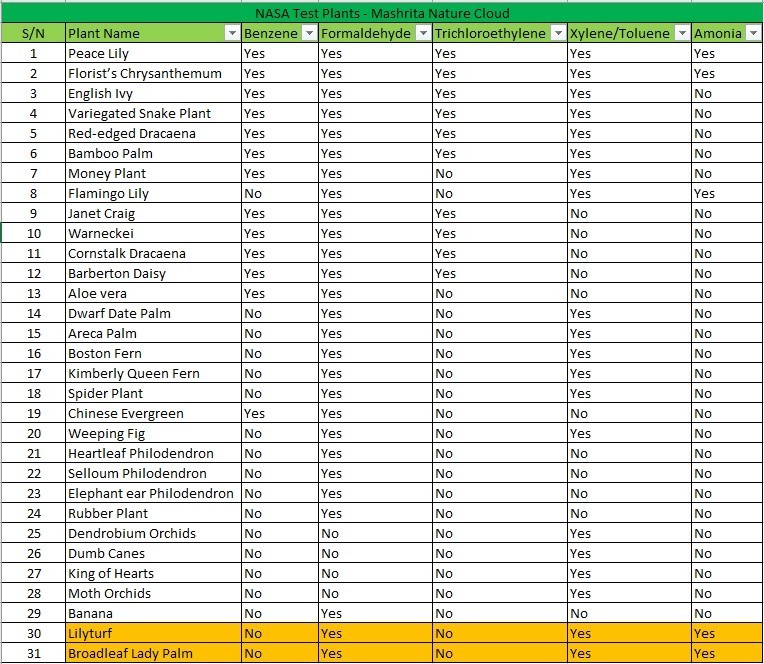
NASA Research Report – Click Here
Wiki Page – Click Here

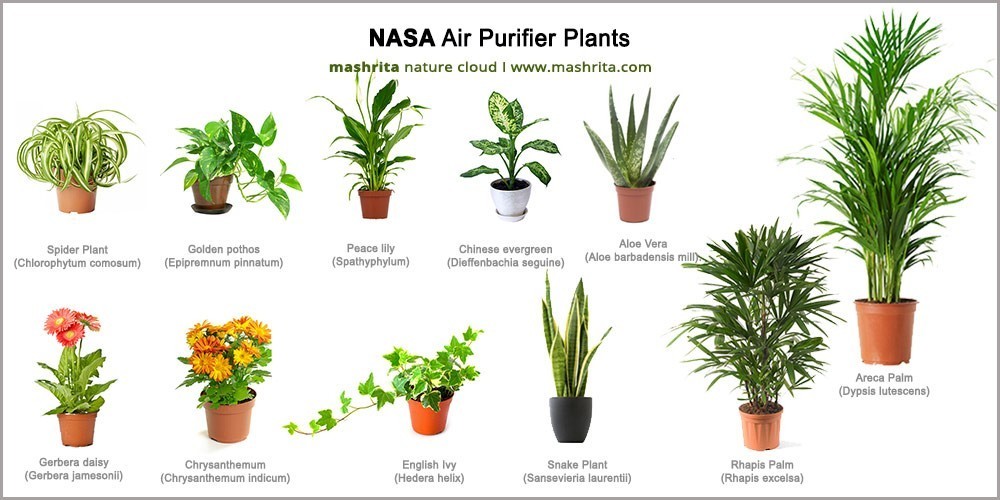






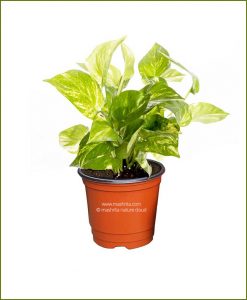

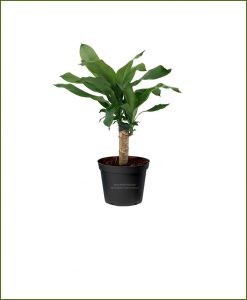






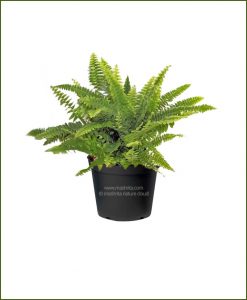

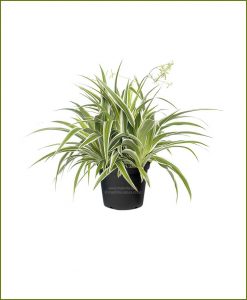





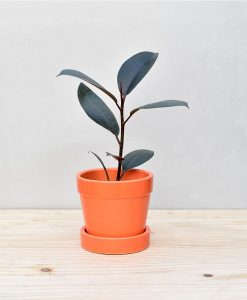




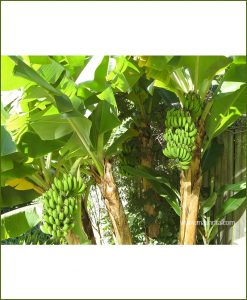
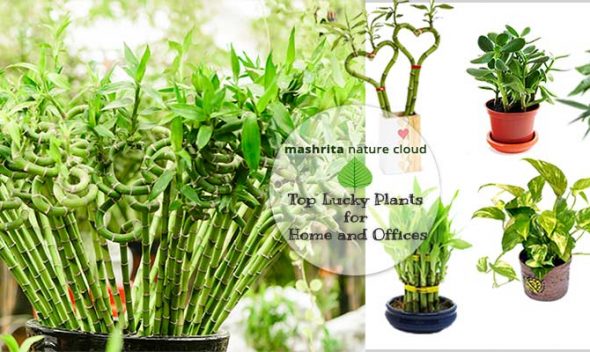
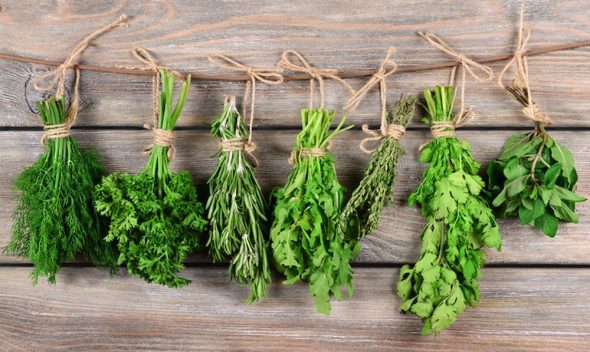
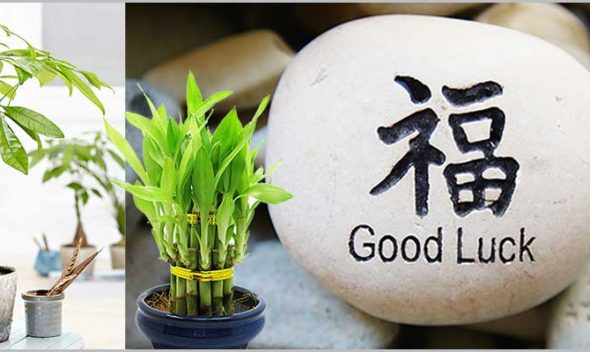
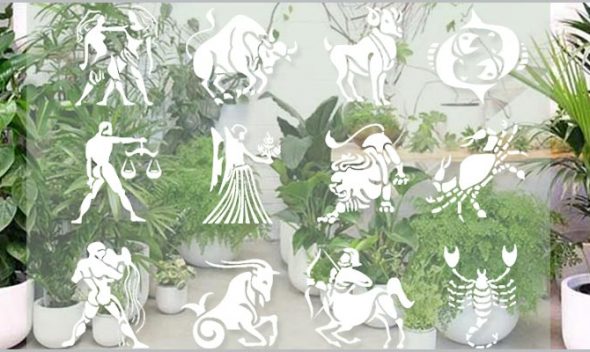

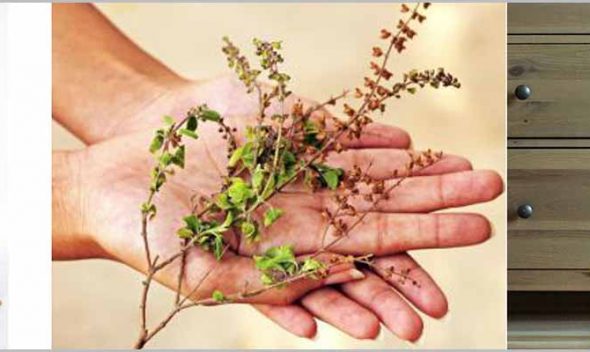
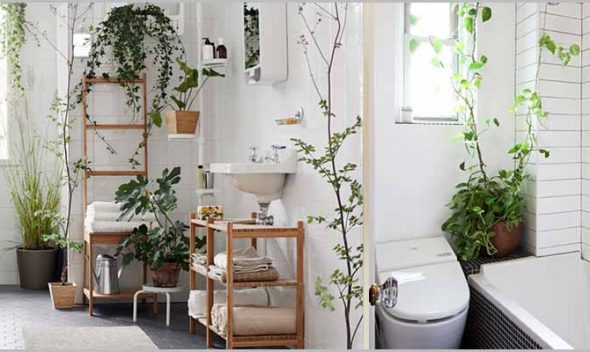



It covers all of them, excellent.